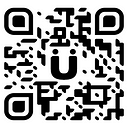Factory to recycling — PRüF delivers end-to-end value.
PRüF enabled physical goods are designed to deliver value to the companies and individuals who interact with a product over its entire life cycle.
When raw materials are in the supply chain, they can be batched as a PRüF asset, tracking their origin, assay results, quantity, and warehouse location. As these materials are fashioned into products, each PRüF enabled object they are made into can bear witness to the origin batches from which it was made. When these items are assembled into finished products, these products can then bear the list of parts, with each part tracing its origins to the raw materials from which it was derived. Each step of the way, there is 100% traceability and accountability within the supply chain. But this is just the beginning.
A finished product, bearing all of the history of its creation, now starts a new journey of ownership.
First and subsequent owners possess a blockchain title for the item, proving ownership without question. When an owner wishes to sell or gift the item, their ownership can be traced back to the purchase and even before — all without publicly revealing any personally identifiable information.
If an item is lost or stolen, an owner can mark that in their wallet. Anyone encountering the item, just by checking the QR code with their camera app (no app required) will see its status, making selling stolen or lost goods harder. The owner of a lost or stolen item may decide to leave public information on the item’s profile, offering a reward for return, or even a put it up for sale to the thief or finder — providing mechanisms to recover their item or at least some of its value.
Every step of the way, funds and agreements are handled trustlessly, keeping people good to their word and disincentivizing acting in bad faith.
At some point in its lifecycle, an item may be discarded by its owner. In this case, the item is left in a “finders-keepers” status, so that anyone who encounters the item can claim the item in the PRüF ecosystem. When they do, the former owner will receive a small payment of network fees, thanking them for setting the item up for re-use. A discarded item can also be left in a “for sale” status, free for reuse, but requiring payment to gain titled ownership.
When an item is no longer useful, the manifest it was built with reveals any valuable components for scrappers. The records of the materials and sub-assemblies from which each part was made are electronically accessible, facilitating recycling and re-use. Suddenly, parts commonality and cross-referencing become simple, and many components that may have previously been buried in landfills may find new use as spares or surplus.
This may seem like the whole story, but there is still more to tell. Along this journey, each time the item was queried in the PRüF infrastructure, the brand owner was presented with an opportunity to create valuable customer interactions.
When the product was verified in the store, the manufacturer gained confirmation of its delivery and customer-facing display. When it was purchased and put into a buyer’s PRüF inventory, the brand was able to present the buyer with a short video describing its proper use for the best possible experience. The customer was educated about accessories, extended warranties, and special offers accompanying their purchase.
If a holder of a PRüF enabled asset decides to mark the item for sale, they are given the option to fill out a quiz about their product experience and shown new models and upgrades. When a buyer on the other side of town purchases the item, payment shows up in escrow for the seller. The item is placed in a dropbox at a nearby commercial area, and a courier service shows up to inspect it and pick it up for delivery.
The new buyer gets the full virtual onboarding experience, and the opportunity to purchase accessories or even a warranty extension — since the approved courier service verified the good condition of the item before receiving delivery. When the item was verified in good condition, payment was made to the seller from the escrow contract. When the item is delivered, the courier will receive payment as soon as the buyer scans the item into their wallet.
When the item eventually is discarded, the owner receives a gift card for filling out a form with a survey and turning the item in for recycling to the courier service. The manufacturer now has a very good idea of the product lifecycle and how the product performed in the real world, and all of this information was gathered without the need to reveal the personally identifiable information of the users involved (except for the shipping address, of course).
From the farm or mine to the recycler, PRüF delivers value to manufacturers, resellers, and users every step of the way; increasing utility and convenience while reducing waste and environmental impact.
